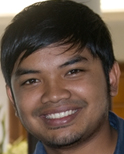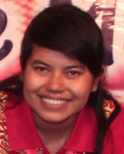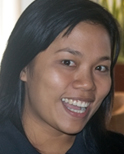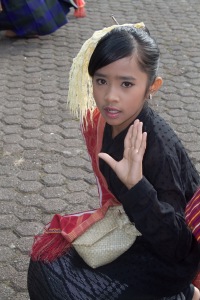I should first of all apologize for my long absence from this blog. I can only say in my defense that I have been preoccupied with so many activities that I had difficulty finding undistracted time to process them adequately.
The WCRC executive staff has now departed for the Executive Committee meeting, which is being held this year in Berastagi, Indonesia, in North Sumatra, from 10 to 17 May. The Executive Committee is comprised of delegates appointed by member churches from all over the world. Its purpose is to establish policy priorities and directives that are consistent with the overarching vision of WCRC. That vision of participating in God’s mission so that all may know the fullness of life in Jesus Christ (John 10:10) is to guide us in all that we do, whether in Geneva or in our various regions throughout the world. General Secretary Setri Nyomi will open the proceedings by presenting his annual report to the committee. The report perhaps can be compared to a “state of the union” address, in which Setri will review the past year’s programmes and activities with the intent to show how far WCRC has fulfilled the directives mandated by the Executive Committee the previous year. Earlier last month, I spent several hours editing and proofing this report, in addition to those that will be coming from the Theology, Communication, and Justice and Partnership offices. I hardly need to mention that this assignment afforded me a wide window through which to look at all the work taken up by WCRC and its partners during this past year. It proved to be a valuable learning experience.
Though not necessarily as a reward for the successful completion of this assignment, the WCRC office nevertheless graciously granted me some time to travel beginning in mid-April. My brother Matt, who had been visiting cities in Spain, included a trip to Geneva on his travel itinerary, and I was very happy to entertain him. After we spent a few days sightseeing here, we decided to go to the storied southwestern region of France, to a city called Toulouse. Toulouse is the fourth largest city in France, situated along the banks of the Garonne River. Quite simply, the city is beautiful. It is called the ville rose, because the old brick buildings that line the stone paved streets are imbued with various shades of pink and orange, almost incandescent in the sunlight. The brilliant color of the buildings is by happy accident. Our guide explained to us that large sections of the city were built during a period of economic hardship in Toulouse. The bricks have this color because of the inferior quality of the cheap materials out of which they were made. Among the impressive buildings that held the greatest attraction for me includes the Church of the Jacobins. Despite the name, it has no connection with the Jacobins of the French Revolution; rather, it is the church of the Dominicans, the order of the preaching brothers (O.P.) founded in 1215 by Dominic de Guzmán, the future St. Dominic. These Dominicans were called Jacobins because one of their convents was located in the Rue Saint-Jacques in Paris. The church’s construction dates from the beginning of the fourteenth century and was completed in 1385. The awesome vault with its bicolored ribbings, its rich Gothic paintings, and perhaps above all the reliquary of St. Thomas Aquinas, which Pope Urban V decided in 1368 to have transferred there, made this church one of the more outstanding ones I have ever visited. I also went to Saint-Sernin Basilica, the largest Romanesque edifice and one of the most beautiful—a spectacular sight to behold both inside and out. Its story began around 250. St. Saturnin (Sernin) was the first bishop of Toulouse and died as a martyr, dragged by a bull for having refused to pour out an offering to the pagan idols enshrined at the temple of the Capitole. At the beginning of the fifth century, his remains were brought to a church built on the site of the present Basilica.
Because we calculated that we were perhaps about an hour and a half from Lourdes, Matt and I decided to venture out early one Sunday morning to spend the day at one of the most renowned pilgrim destinations in the world—especially for Roman Catholics—today. No doubt some of you will be familiar with the story of the young girl named Bernadette who made this little Pyrenean town famous. On a cold February night in 1858, the fourteen-year old girl, accompanied by her sister and a friend, went to a grotto along the Gave de Pau River in search of firewood. There, in a recess in a grotto, “a Lady dressed in white appeared to her.” Three days later Bernadette returned to the same place, and the Lady appeared to her a second time. Four days after that, accompanied by an older woman for whom Bernadette had worked occasionally and the woman’s seamstress, Bernadette once again returned to the grotto. They urged the apparition to sign her name. The Lady smiled and replied: “That won’t be necessary. But would you do me the favor of coming here everyday for a fortnight? I promise you happiness, not in this world, but in the next.” On February 24, in her eighth apparition, the Lady said, “Penitence” and then “Would you pray to God for the conversion of sinners?” The following day, oddly enough, she instructed Bernadette to “go and drink at the spring and wash in it” and “eat the grass that is there.” During the thirteenth apparition, the Lady ordered that the priests let the “people come in procession and a chapel be built over the site.” But it was not until the sixteenth apparition that the Lady identified herself as the “Immaculate Conception,” one of the titles ascribed to the Virgin Mary in the Middle Ages to express the belief that in order to have borne the sinless Jesus in her body, she had to have been conceived without the “stain” (maculum) of original sin. This doctrine was later elevated to authoritative status in the Roman Catholic Church, but it is not shared among the Reformed churches.
In 1866 the Crypt, set into the heart of the rock, served as the first chapel at Lourdes. Built directly above the Crypt is the Basilica of the Immaculate Conception, opened to the public in 1871. The nave of this massive church opens out onto ten side chapels that tell the story in stained-glass windows of the apparitions of the Virgin Mary and subsequent pilgrimages to Lourdes. The Rosary Church was inaugurated in 1889, and raised to the rank of minor Basilica by Pope Pius XI in 1926. It features in its fifteen side chapels colorful mosaics of the saving events (mysteries) of Jesus Christ to guide the faithful in their prayers and meditation. In order to accommodate the increasing number of pilgrims to this remarkable site, however, another church had to be built in the 1950s. Consecrated in 1958 and dedicated to Saint Pius X, this huge underground structure can hold an assembly of nearly 30,000 people. My brother and I were astonished at the space that opened out before us as we descended the long concrete ramp into this church. In order to picture it, imagine a massive underground parking lot without the supporting columns that organize the parking spaces. International masses are celebrated here between April and October.
After visiting the churches, we went to the grotto to see the site for ourselves. It is rimmed by fountains and baths supplied by a spring that Bernadette had discovered in 1858. Pilgrims bring their water and coke bottles to the fountains to fill them with the water, which is believed to have medicinal properties. Likewise, those in search of a physical cure stand (or sit) in long queues leading to the fourteen stone baths, in which the sick—up to 400,000 per year—are immersed by nurses and hospital workers, volunteers at Our Lady of Lourdes Hospital.
Any description of this place would be incomplete without mention of the Way of the Cross, which winds around the Espélugues Hill. It extends almost three-quarters of a mile, consisting of 15 stations in which are portrayed the scenes of Christ’s judgment, condemnation, crucifixion and resurrection. One hundred fifteen cast iron figures that stand more than six and a half feet high enact the scenes. They include the Roman soldiers, Pontius Pilate, the women who followed Jesus to the cross (including Veronica) and Jesus himself. The statues were made between 1901 and 1912 by Maison Raffi.
After our sojourn in France, my brother traveled westward to Madrid and I returned to Geneva. I had hardly any time to recuperate before I had to board a flight bound for Atlanta, where the second session of the current round of ecumenical dialogues between the Reformed and the Roman Catholics was held this year. Douwe Visser had invited me to participate as an observer. I attended the sessions, recorded minutes, raised a question or two, and led a worship service during the week. Papers were presented both by the Roman Catholic and Reformed participants. Much of the discussion revolved around the Joint Declaration of the Doctrine of Justification (JDDJ), a consensus document signed by the Lutheran World Federation and the (Roman Catholic) Pontifical Council for Promoting Christian Unity on October 31, 1999 in Augsburg, Germany. The outcome of almost 30 years of bilateral dialogue on a doctrine regarded by church historians and theologians as the crux of all the disputes of the Reformation era, this event was celebrated as a signal achievement in the ecumenical movement. In 2006, the World Methodist Council “affiliated” with the JDDJ by attaching a signing statement. In 2010, the Uniting General Council of WCRC mandated our office to establish a consultation process to determine whether or not the Reformed churches could do the same. It will be interesting to see how this unfolds. Some churches, especially on the European continent, where Reformed and Lutheran churches have been merging to form uniting Protestant churches, are urging the office to press ahead. Other churches, for which old sixteenth-century controversies hardly seem relevant as they confront problems and challenges coming out of a very different time and place, seem less interested. One of the Reformed team members argued that failure to attach a Reformed signing statement to the JDDJ would not only marginalize the Reformed churches in the broader ecumenical world but also deprive the other churches of the distinctive Reformed perspective of justification, which would enlarge their understanding of the doctrine. In this latter observation is implied the idea of “exchange of gifts,” according to which churches receive through mutual sharing gifts of grace that enable each to attain to a greater fullness in Christ. My own sense is that if these dialogue processes continue to serve legitimately as stages on the way towards the full unity of Christ’s church, then a case can be made for their continuation. But they must always be demonstrably subordinated to this goal.
In an era in which conflicting ideologies and competing political visions and agendas threaten to rend the social fabric apart at the seams, the ecumenical movement is more relevant now than ever. In a renewal of the witness of the one church of Jesus Christ one should find true hope. Only a reconciled and reconciling community, faithful to its Lord, in which human divisions are really being overcome, presents the “one thing needful” to an alienated and divided world that God so loved that he sent his only begotten Son.









